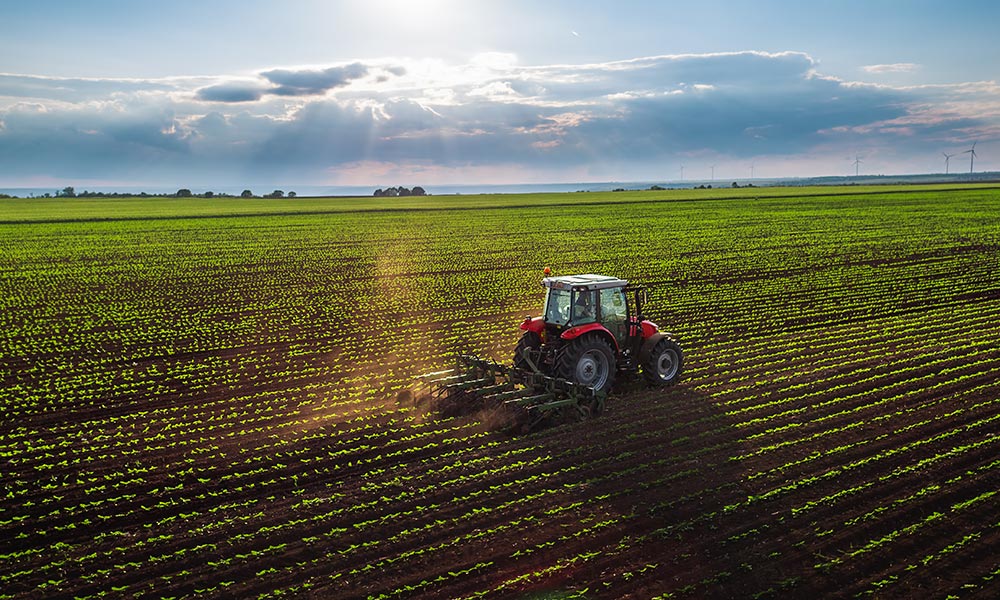Digestate solutions: spreading for success in 2019

Last year, AWSM Recyling spread 325,000 tonnes of digestate. Sourced from aerobic digestion (AD) plants, digestate provides farmlands across the nation with a useful and convenient source of nutrients.
Often referred to as ‘rocket fuel’, digestate is a great organic fertiliser — the nickname is attributed mainly to its high nitrogen content (when compared to traditional livestock slurries). Primarily a waste byproduct formed during anaerobic digestion, digestate is made up of a mix of indigestible materials and dead microorganisms.
Digestate spreading can be used to treat nutrient deficient soil and ensure effective crop growth. A convenient product for farmers, digestate can be stored in either satellite tanks or silos, or custom-dug-and-lined lagoons. Providing that the product is stored appropriately and only spread on suitable ground, many farmers can reap the rewards that digestate solutions bring to their land.
Benefits of digestate spreading
Digestate spreading has rocketed in popularity in recent years, as farmers seek alternatives to traditional slurry spreading. As a method of fertilisation, digestate is a practical, low-cost alternative to artificial fertilisers, that yields positive results for both farmers and the surrounding environment when applied to suitable farmland.
The application of digestate solutions to farmland can help boost the general health of soil on farms while bolstering the local ecosystem. When applied to suitable ground, digestate spreading helps guarantee healthier worm activity and improved nutrient uptake, reinforcing its efficiency. By using digestate on land, it is also possible for farmers to be able to accurately predict crop yields, making financial forecasts potentially more accurate.
Compared to artificial fertilisers, digestate is also more economical. Due to lower production and spreading costs, digestate spreading is cheaper per acre for many farmers. Digestate spreading is also more sustainable, as it is consistently more nutritious for soil when compared to both artificial fertilisers and traditional slurry spreading.
The nutrients at the heart of digestate (which include nitrogen, phosphate and potash), can help boost the efficiency of the soil, which can stimulate better crop growth, ultimately yielding bigger and better harvests. Naturally, such positive results can only be achieved when digestate spreading is carried out at the optimum times. This means that tests have to be carried out beforehand to ensure the best outcome.
The benefits of digestate spreading have been outlined in more detail previously.
Digestate solutions, farming of the future
The popularity of digestate as an alternative to artificial fertilisers is not surprising. The product is a welcome replacement for many traditional spreading methods. 2019 is set to be another successful year for digestate solutions (the product and subsequent storage) across the nation.
The convenience of storing digestate is what makes the product so appealing for many farmers and AD plant operators. Digestate can be stored in either a custom-dug “lagoon”, that sits in the ground and is covered by a floating lid, or in a temporary silo, that can (in some cases) sit alongside an on-site AD plant.
Many farmers are subsequently becoming AD plant operators, as digestate spreading can become more efficient if the product is being produced on-site. By combining the two – creation and storage – farmers are able to guarantee available digestate spreading at the most appropriate times.
Unfortunately, the storage of digestate is proving to be a problematic and ever-changing challenge for many farmers and AD plant operators. New regulations introduced in 2017 made the construction and storage of suitable digestate stores difficult, as the necessary licenses became harder to obtain. In recent months, proposed changes to the government’s Clean Air Strategy suggest that all slurry and digestate stores will need to be covered by 2027, to help reduce the likelihood of accidental phosphate pollution (into nearby water sources, including rivers) and gases escaping from the digestate.
Despite these restrictions, digestate spreading can still achieve the optimum results for farmers and AD plant operators, providing they can follow the best practices set out by the government and other authorities.
Digestate solutions seem to be the way forward for many farmers looking to swap-out traditional fertilising methods for more contemporary, nutritious techniques. Paired with the appeal of having an on-site AD plant, the successes of digestate solutions look set to continue well into the future. A higher number of temporary and permanent AD plants – and accompanying storage solutions – are expected to be constructed by AWSM Storage in the coming 12 months, adding to the already-established fifty that were built in 2018.





